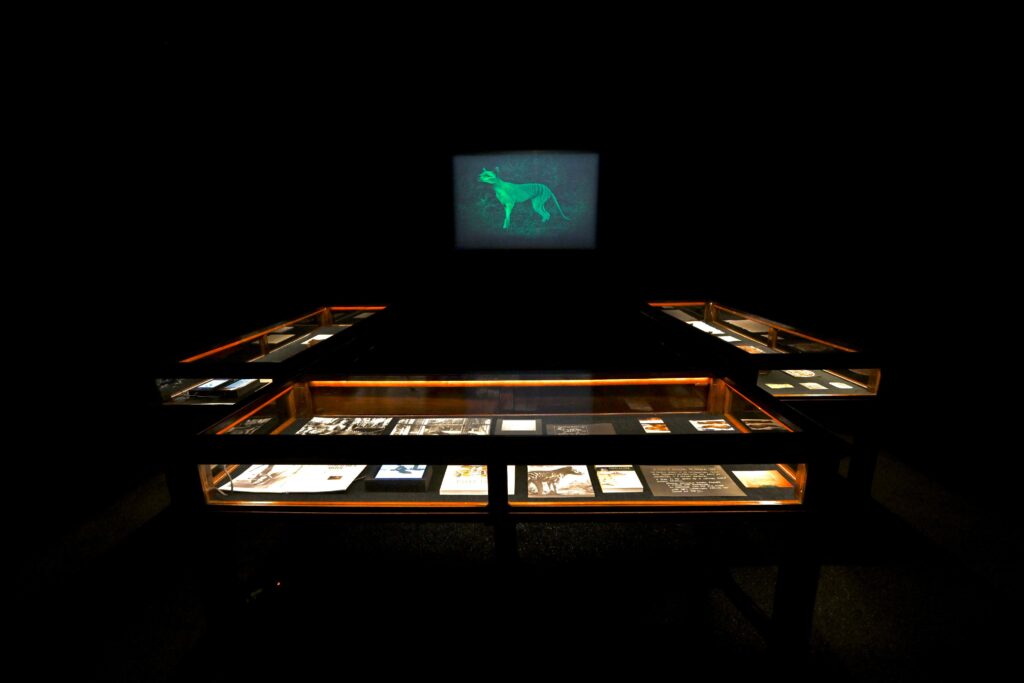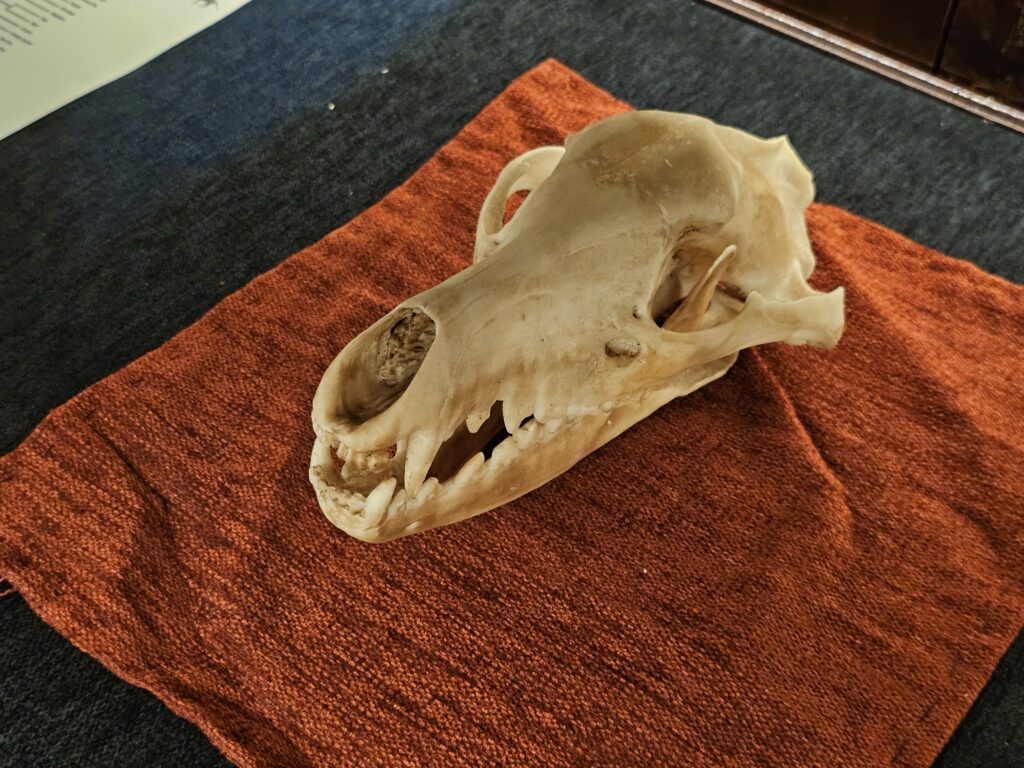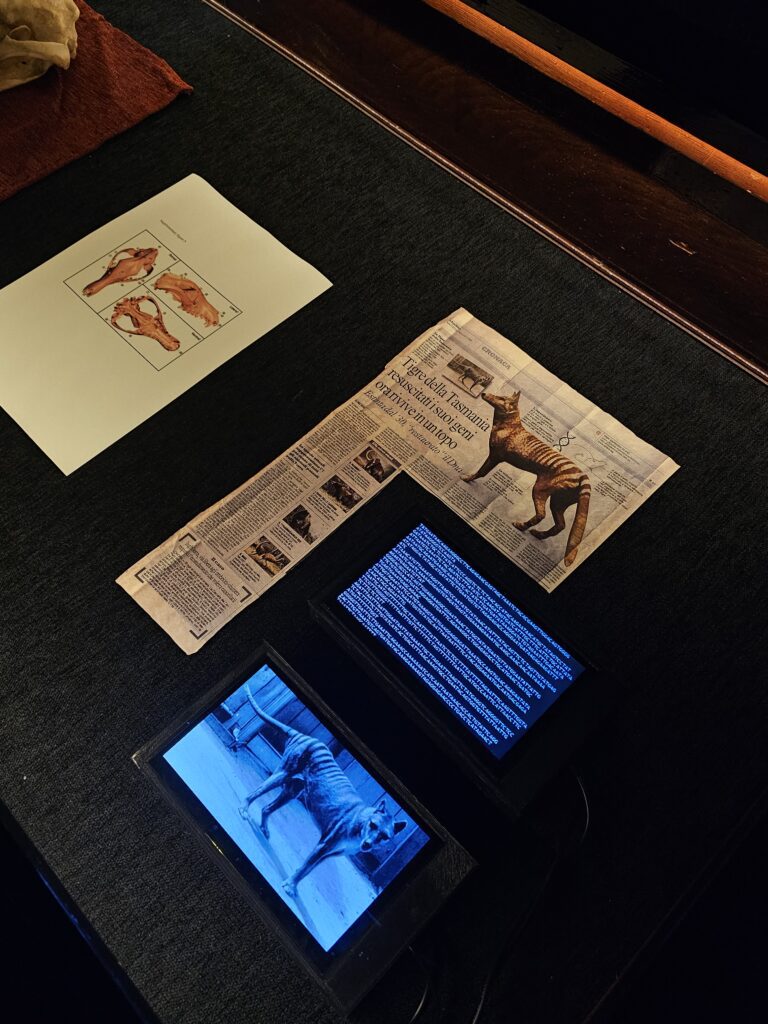The Institute for Bioengineering of Catalonia (IBEC) attended the opening of the exhibition, which highlights extinct fauna that remains present in the collective imagination. The exhibition includes a section dedicated to the Tasmanian tiger featuring a piece by Antoni Muntadas, on which IBEC collaborated with Benedetta Bolognesi, a principal investigator at the institute.

Throughout the history of our planet, hundreds of animal species have disappeared due to climate change, hunting and habitat destruction, among other factors. However, some of these species continue to live on in our collective imagination, even though they are no longer biologically present on our planet. So, when is a species considered extinct? This is precisely what the Natural Science Museum of Barcelonav aims to convey through its exhibition, ‘Invisible Animals: Myth, Life, Extinction, De-extinction’, which opened in Barcelona on 17 May. IBEC participated in the exhibition with a section dedicated to the Tasmanian tiger.
IBEC representatives attended the opening ceremony, hosted by the museum’s director Carles Lalueza and Jordi Serrallonga and Daniel Martínez. During the presentation, the interdisciplinary nature of the exhibition was emphasised, breaking down the artificial barriers between science and art often imposed by education. The current exhibition therefore presents several extinct animals from a scientific perspective and also includes artistic proposals that graphically reflect biodiversity, making it a cutting-edge exhibition.
Among the voices welcoming the exhibition is well-known actor Viggo Mortensen, who reflects on extinct animals, the value of the exhibition, and the fact that not everything can be seen. He reminds us that the exhibition is about invisible creatures that inhabit our imaginations, but always from a scientific perspective. He believes that dreaming is essential for any good explorer or academic and highlights the importance of respecting the natural habitat of animals and promoting coexistence. He also quotes John C. Sawhill, recalling his statement that ‘Society is defined as much by what it creates as by what it refuses to destroy’, an idea omnipresent throughout the exhibition.
Bringing the Tasmanian tiger back from extinction
In this context, as mentioned above, the exhibition features a section dedicated to the Tasmanian tiger. This piece by Antoni Muntadas was created in collaboration with IBEC, through its principal investigator, Benedetta Bolognesi, as part of the 2022 Ars Electronica festival in Austria. For this exhibition, the installation has been relocated to a room devoted entirely to the Tasmanian tiger, comprising three display cases. The first showcases the animal’s impact on popular culture through items such as beer bottles, postcards, and coasters. The second display case contains research materials, including montages, sketches and documents that illustrate the evolution of scientific and artistic interest in this creature. The third display case explores the scientific field and features the scientific contributions of Benedetta Bolognesi, the principal investigator of the Protein Phase Transitions in Health and Disease group at IBEC.





One of the starting points was the sequencing of the genome of a young Tasmanian tiger specimen that had been preserved in ethanol for over 108 years. This sequence enabled the construction of phylogenetic trees demonstrating the high homology between the genome of this extinct animal and those of several current species. Based on this data, Bolognesi created visual adaptations of some of these trees to illustrate the genetic similarities with living species. There is also a representation of the Tasmanian tiger’s complete DNA sequence projected onto a screen as a data stream.
This display case also contains photographs of the tiger, DNA sequences, phylogenetic trees and scientific documents that expand on the story. There is also a central piece: a hologram of the Tasmanian tiger. This technology is almost extinct itself and was generated under extremely demanding technical conditions. Víctor Pallarés created the 3D model of this representation based on a preserved stuffed tiger.
This combination of art, science and technology is a prime example of how disciplines can collaborate to reveal what is no longer present, yet still resonates in the collective imagination.
The exhibition is open at the Natural Science Museum of Barcelona until 30 September 2025.





